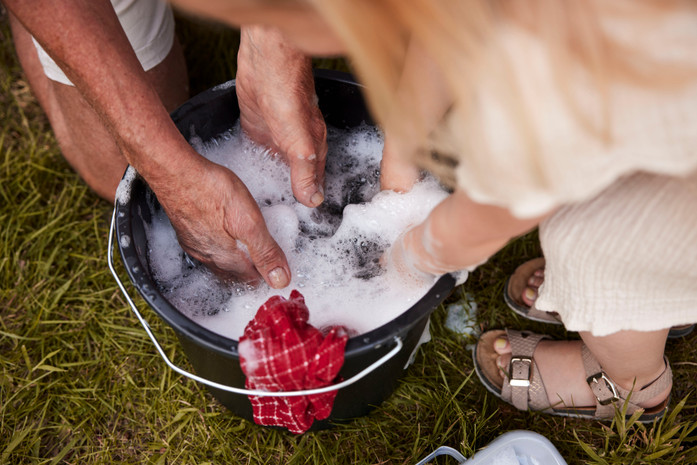Slim with water, ready for the future
Slim with water: this is how to prepare your recreation park for the future
Practical steps for less consumption, lower costs and greater sustainability
Why water is so important at your park
Water is indispensable at any recreation park. Whether for cleaning, plumbing, wellness or the greenery around the accommodations, without water everything stands still.
Yet water management often receives less attention than energy or waste separation, for example, when it comes to sustainability or cost savings. A pity, because the share of water in the operational costs and environmental impact is growing. This is precisely why now is the time to take a critical look at how you deal with water in your park.
Want to depend less on the regular water grid, work more sustainably and save money at the same time? Then there are great opportunities. Not everything has to happen at once. With smart choices, you can take steps today.
Why conscious water use is increasingly important
Water seems cheap, but that is precisely what makes it tempting not to use it efficiently. Meanwhile, the challenges are increasing. Think longer periods of drought and stricter rules around groundwater use and discharges.
For parks outside of built-up areas, these developments can be especially noticeable. Especially then it is slim to take a close look at your water consumption. Not only to reduce costs, but especially to be future-proof and responsible.
Completely self-sufficient? More difficult than with electricity, but not impossible
For electricity, you can already achieve quite a lot with solar panels and batteries. For water, it is just a bit more complex. Still, there are solutions that contribute to less dependence. From simple installations to innovative circular systems. Below you can see how you can make an immediate difference.
Four ways to use water smarter at your park
1. Use groundwater for applications that do not require drinking water
In certain regions, you may use groundwater if you have the proper permit to do so. You can use this water for practical purposes such as:
- Cleaning of accommodations
- Flushing toilets
- Watering plants and lawns
Please note that the rules for groundwater use are strict. Be well informed beforehand and also weigh the ecological impact.
2. Make use of proprietary water circles in your accommodations
For lodges or tiny houses, there are now compact systems that allow you to be self-sufficient. Consider:
- Collect and filter rainwater for reuse
- Use lightly contaminated water (such as from the shower) for toilet flushing
- Vacuum or composting toilets that barely require water
Ideal for places without a connection or for parks with high sustainability ambitions.
3. Install water-saving devices
A simple, affordable step with big effect. Replace existing showerheads, faucets and toilets with water-saving models. You can save up to 30 to 50 percent water by doing so, without sacrificing comfort for your guests.
Also consider sensors or push buttons in public washrooms. This prevents unnecessary consumption and sets a good example.
4. Measure and monitor your water use
Once you have insight into your water consumption, you can make more targeted improvements. Smart water meters help you detect leaks quickly and track consumption by property or zone.
Also use that data to make your cleaning team aware. And give guests information about sustainable water use during their stay. Especially during dry periods, this is often appreciated.
The power lies in a clever mix
Being completely self-sufficient in water is now feasible for few parks. But you don't have to change everything at once to make a difference. With a combination of technology, awareness and smart choices, you can save water step by step, reduce costs and contribute to a more sustainable industry.
So, when will you take your first step toward future-proof water use at your park?


